Español
Everything you need to know before trying the legendary Chinese Hot Pot

Have you heard of hot pot? Also known as Olla Caliente in Spanish, it's a culinary journey through China and a gastronomic experience you should have at least once. Get ready to discover why this bubbling pot should be a must-do on your next trip.
A Journey Through Time in Every Bite
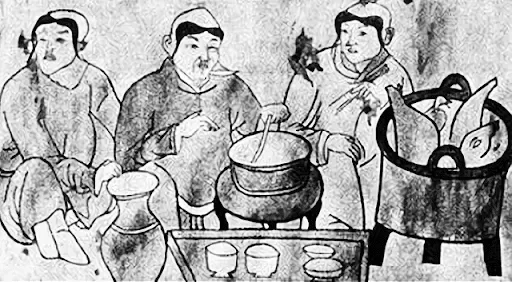
The history of hotpot is as rich as its broth. Its roots stretch back to the Han Dynasty, over 2,000 years ago, with " qiao dou ," considered its ancestor. Imagine warriors heating their rations in small pots over hot coals. Over the centuries, this simple practice evolved. During the Tang Dynasty, hotpot crossed borders, traveling from the cold north to southern China, gaining popularity across all social classes.
But it was during the Qing dynasty that hotpot reached its zenith in courtly culture. Emperor Qianlong was a true devotee; his imperial banquets were often notable for the presence of numerous hotpots. The historical record was set by Emperor Jiaqing's " Banquet of the Thousand Long-Lived " in 1796, where more than 1,550 hotpots were used simultaneously. This imperial passion for steaming broth never disappeared; it simply became more widespread, becoming a fundamental part of modern Chinese cuisine.
A Map of Flavors in Each Region
What's fascinating about hotpot is that there isn't just one single hotpot; each region has created its own version of this dish, which is a direct reflection of China's geographical and cultural diversity and lends its unique character to the pot. So, discovering its varieties is like traveling the country itself.
Sichuan (Chongqing & Chengdu):

If you're looking for an intense experience, this is your starting point. Sichuan hotpot (especially the infamous Chongqing style) is renowned for being the spiciest variety. The key lies in the celebrated Sichuan peppercorn ( huājiāo ) and a generous amount of dried chilies and chili oil, creating an imposing red broth (the color alone should serve as a warning). This broth is then consumed with all sorts of ingredients such as beef tripe (especially maodu , beef stomach), liver, beef, pork, chicken, fresh vegetables, various tofu, and noodles, all bathed in that fiery liquid. It's important to clarify that although they share many similarities, the hotpot from these two cities isn't exactly the same: the Chengdu style can be slightly more aromatic, while the Chongqing style, with its broth cooked in beef fat instead of vegetable oil, has a slightly thicker texture and a smokier flavor that the other lacks.

Yunnan:
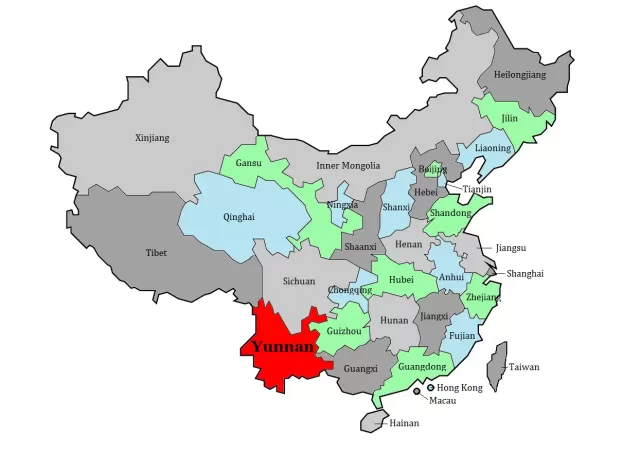 Meanwhile, in the far southwest lies Yunnan. Yunnan hotpot celebrates the province's incredible biodiversity. It features lighter, more fragrant broths, often infused with fresh herbs like mint (a staple here) and edible flowers. The ingredients are typically quite varied, ranging from meats and wild mushrooms to river fish and local vegetables. The magic also lies in the dipping sauces: an explosion of options where sesame oil and different types of chili peppers are creatively combined. And don't be surprised to see dishes like fresh mint salad or even Yunnan-style fried crickets as unique side dishes.
Meanwhile, in the far southwest lies Yunnan. Yunnan hotpot celebrates the province's incredible biodiversity. It features lighter, more fragrant broths, often infused with fresh herbs like mint (a staple here) and edible flowers. The ingredients are typically quite varied, ranging from meats and wild mushrooms to river fish and local vegetables. The magic also lies in the dipping sauces: an explosion of options where sesame oil and different types of chili peppers are creatively combined. And don't be surprised to see dishes like fresh mint salad or even Yunnan-style fried crickets as unique side dishes.
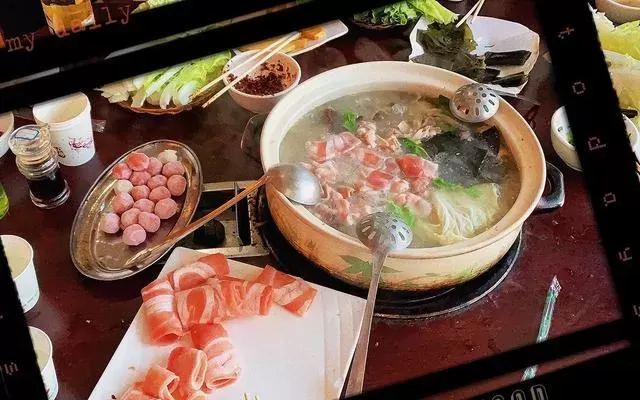
Canton (Guangdong):
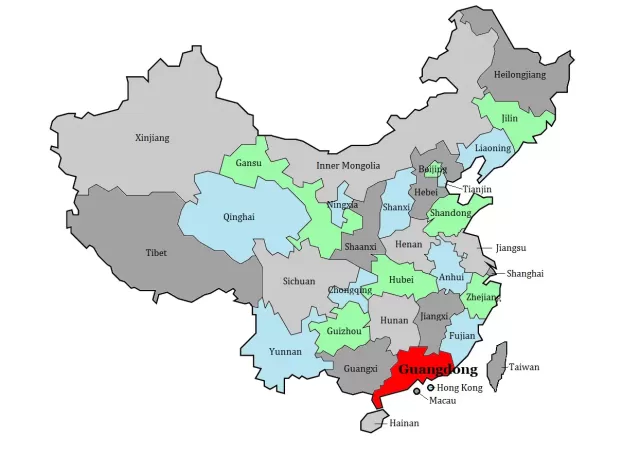 In the south, hotpot takes a completely different approach. The broths are typically clear and delicate, made with pork or chicken bones, seasoned simply with a touch of light soy sauce and salt. The aim is to enhance the flavors, allowing them to blend harmoniously. Here, the key ingredients are, of course, fresh seafood such as shrimp, clams, crab, and white-fleshed fish, along with select cuts of meat like thinly sliced beef or fish balls. Vegetables are present, but play a less prominent role than in other regions.
In the south, hotpot takes a completely different approach. The broths are typically clear and delicate, made with pork or chicken bones, seasoned simply with a touch of light soy sauce and salt. The aim is to enhance the flavors, allowing them to blend harmoniously. Here, the key ingredients are, of course, fresh seafood such as shrimp, clams, crab, and white-fleshed fish, along with select cuts of meat like thinly sliced beef or fish balls. Vegetables are present, but play a less prominent role than in other regions.
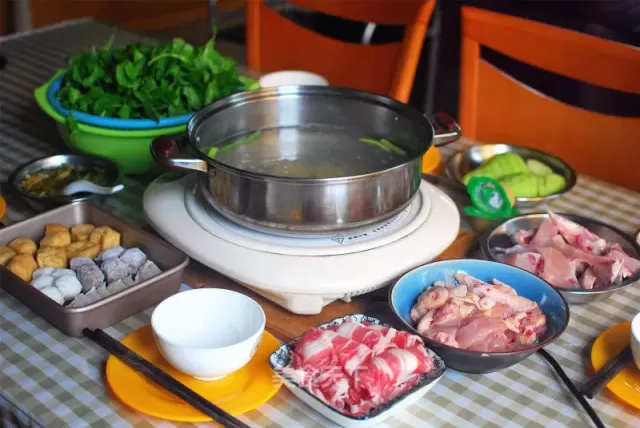
Guilin (Guilin): A Touch of Acidity:

A surprise within the hotpot scene, the Guilin style is characterized by its tomato base , which imparts a unique sweet and slightly acidic profile. This broth is prepared with fresh and sun-dried tomatoes, dried chilies, aromatic herbs, and often a touch of fish sauce. Meats, vegetables, tofu, and noodles are simmered in this vibrant sauce, creating a refreshing combination unlike anything else.
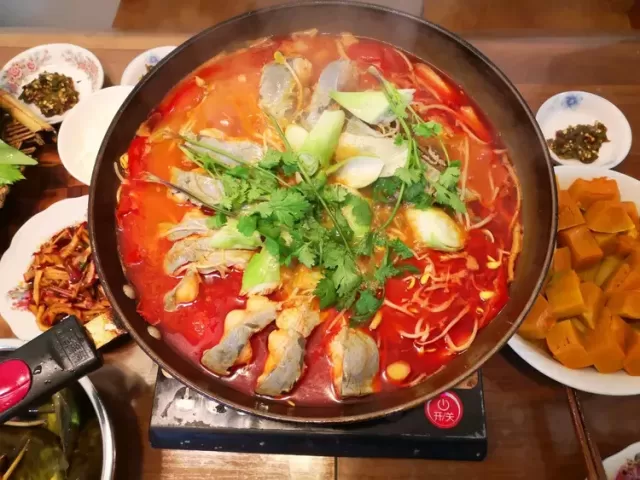
Coconut and Chicken Hotpot: This newer variation has gained immense popularity for being perceived as a lighter and healthier option. Its base is simple yet delicious: fresh coconut water and clear chicken broth. Pieces of Hainan-style chicken (tender and juicy) are the main ingredient. By not using heavy oils or ghee (like Sichuan hotpot), the resulting broth is so pure that you can even drink it like soup before adding the ingredients.
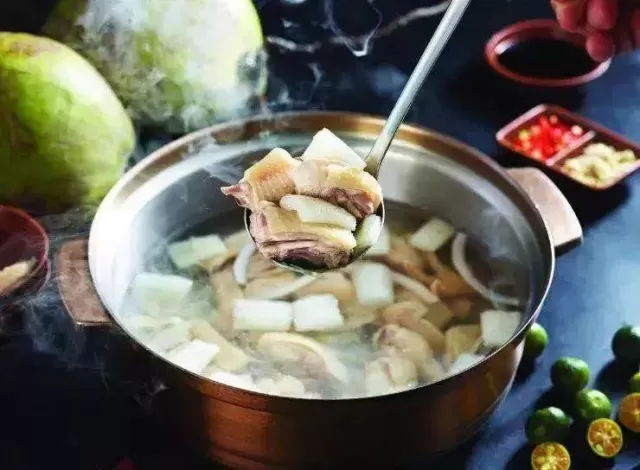
Special Gems in the World of Hotpot
Beyond the major regions, there are specific preparations that are true delicacies:
Fish Head Hotpot:
Its spiciness comes from the prized " Er Jing Tiao " chilies of Shuangliu (Sichuan). The secret also lies in the fermented fava bean paste ( doubanjiang ), made with those same chilies, beans, and herbs, fermented for at least a year in ceramic vats to develop an unparalleled umami depth.
Wild Mushroom Hotpot (Jungleguo):
This hotpot eschews strong seasonings to celebrate the pure umami flavor of wild mushrooms (such as porcini, bamboo, wood ear, or matsutake). The base broth, whether made with aged chicken, duck, seafood, or even turtle, is transformed by the addition of these mushrooms, creating an intensely aromatic and naturally sweet soup that doesn't require MSG. These mushrooms, grown in remote, unpolluted forests, are not only delicious (maintaining their firm texture) but are also prized for their nutritional and medicinal properties.
Traditional Charcoal Hotpot (Lao Shi Huoguo / Mongolian):
This is the classic hotpot many Chinese remember, with its copper or brass pot and central chimney, fueled by charcoal embers . The heat is intense and constant, perfect for cooking thin slices of fresh lamb in seconds. It's often associated with halal ( qingzhen ) style restaurants, popular in the local Muslim community, and has a distinctive aroma. The meat, typically freshly cut and never frozen, is exceptionally tender.
Tips for eating
Don't be afraid to ask: Menus can be overwhelming. Ask the staff for recommendations on local styles or star ingredients.
Start Mild (if Spicy): If you try a Sichuan or Chongqing hotpot, be cautious with the spiciness level (" Wei La " - mild, " Zhong La " - medium). You can order the split pot (" Yuan Yang Guo ") to have one side spicy and one side mild.
Choose your sauce wisely: The sauce you make can take your culinary experience to the next level, or it can ruin it. Don't be afraid to experiment! Many guides are also available online to help you select the right ingredients for a sauce that suits different types of broth.
